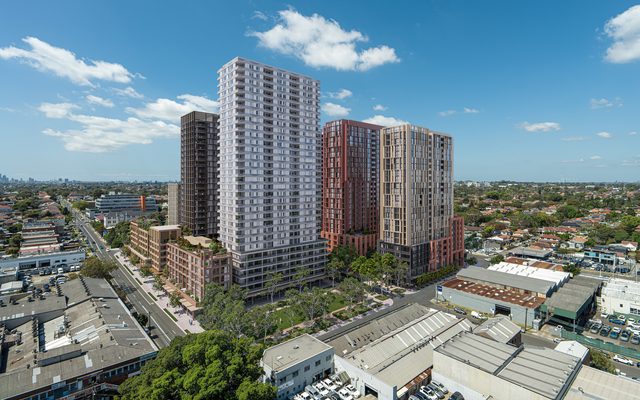This article is from the Australian Property Journal archive
OPINION: MELBOURNE’S population is tipped to hit 8 million by 2050. It’s a credit to successive state governments that Melbourne is seen as such a desirable place to live, but with population growth necessarily comes an increase in pressure on housing availability and affordability.
At the heart of this issue is the sustainability of our long-held previous values around housing. The days of the free-standing house on a quarter acre block are out of reach for many Australians, especially younger Australians, but our cultural attitudes towards housing have not kept pace.
Density is a concept that for many conjures up visions of cheap and poorly made apartments crammed onto ever smaller city plots. And that’s not what anyone wants to see – liveability and sustainability are key concepts, and Melburnians can often struggle to equate these ideas with higher density.
Instead, developers and councils should be looking to smart, sustainable, medium density housing around key infrastructure hubs; housing that allows Melburnians to get to build local communities and get to work.
Melbourne’s apartment market is quite immature in this respect. High-end, community integrated apartment living isn’t something that we’ve had a lot of experience with, and the old tropes about the desirability of low density housing persist.
The challenge for both government and developers is how to build the case for density – and how to institute a cultural shift in attitudes towards valuing sustainable medium-density living.
State government can make recommendations about density, but ultimately local government is responsible for planning approvals. But local government is often subject to significant pressure from residents’ groups who oppose greater density in development.
And for both local and state government, the danger of pushing through a pro-density agenda above the objections of local residents accustomed to large blocks and freestanding houses is a loss of political support.
Changing attitudes about the desirability of density will take time, but much local opposition to increased density is driven by a fear that local transport networks and other infrastructure will not be able to cope with an influx of new residents.
State and local governments can work together to ensure that increased housing density is met with corresponding infrastructure development: if residents already believe their trains are too full, their roads too clogged, and their schools and hospitals not up to scratch, they will not be inclined to welcome more pressure on those systems and institutions.
Developers can also assist in overcoming these fears about overburdened community amenities by integrating sustainable and community focused designs into their marketing around higher density projects. It’s important for developers to be seen as part of the local community rather than as profit-making behemoths out to ruin the character of established suburbs.
Ultimately, people want to live near where they work. They want to be able to exist in a network that allows community and business to flourish. Developers should be demonstrating how well-designed, medium density housing can facilitate lifestyle.
For developers though, the challenge is in generating enough market demand for this sort of medium density housing, replete with community amenities.
While demonstrative projects that show the value of high-end medium density living might help to change community attitudes about the value of such projects, developers face difficulty in obtaining funding for a model that has a seemingly limited market.
In a lot of ways, the development product is dictated by what funding the developer can access. There is a perception that there is little market demand for high-end, community integrated, medium-density living, so developers are forced into building low-end, high-margin apartments with little in the way of community amenities in order to recoup their funding costs. This in turn fuels negative perceptions about density among local communities in a vicious cycle.
Government and developers can’t solve the question of funding without the input of banks and lenders. Rethinking the development funding model is a long term conversation that requires all parties to come to the table.
Changing perceptions about the prestige of density will not be solved overnight. But perhaps Melbourne can take hope from the nature of the population influx.
With Melbourne proving itself as a multicultural hub, attracting overseas investors and residents, differing attitudes and cultural expectations around apartment living are also being imported.
Many of Melbourne’s newer residents are coming from far more mature apartment markets, where higher density living is not only accepted, but also prized. Prudent investors and developers will be able to capitalise on this cultural and attitudinal shift.
By Rob McKie, Partner, Pitcher Partners.*
Australian Property Journal




